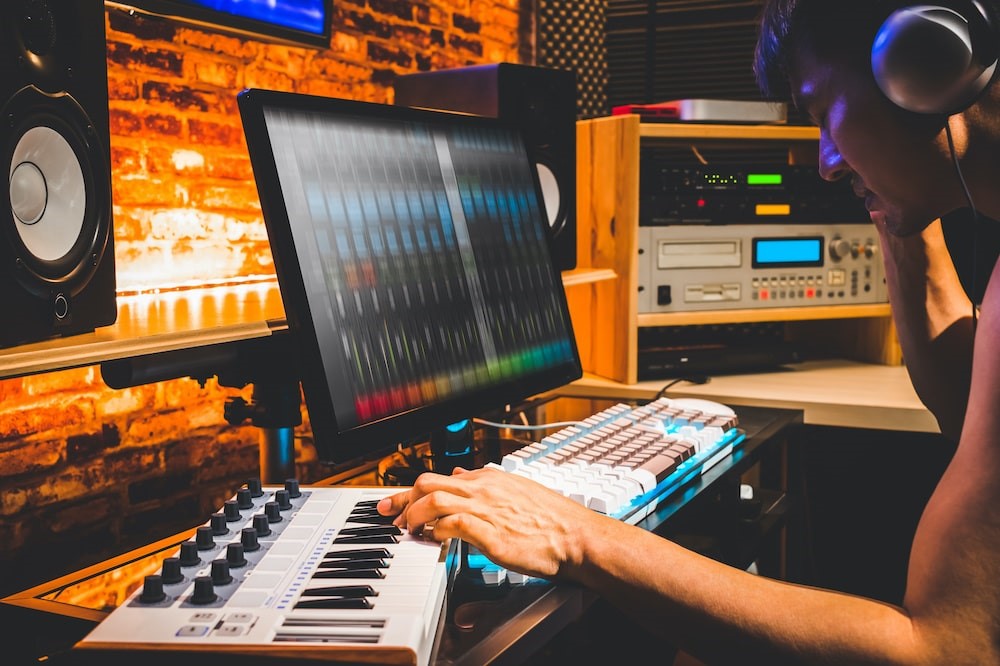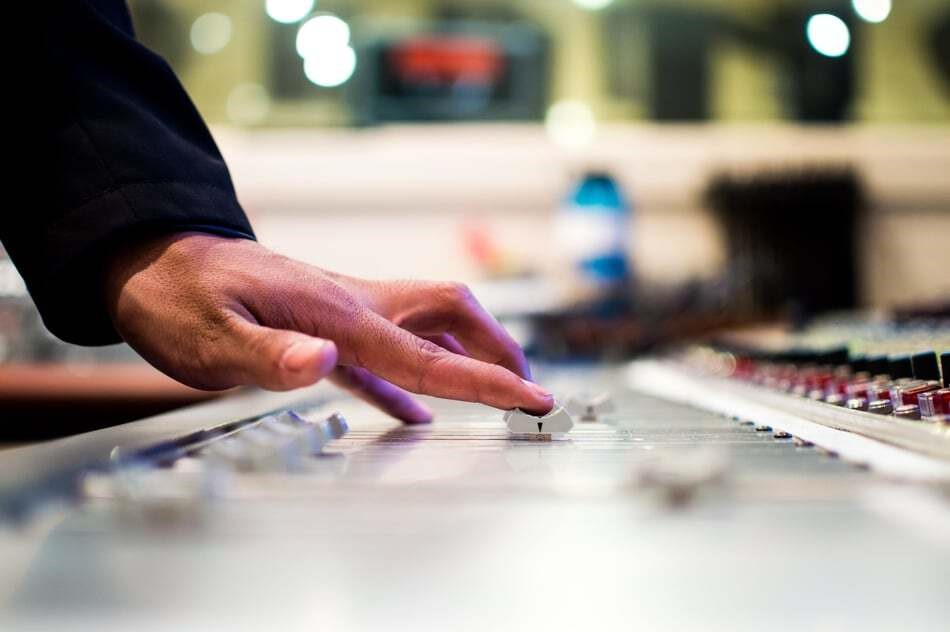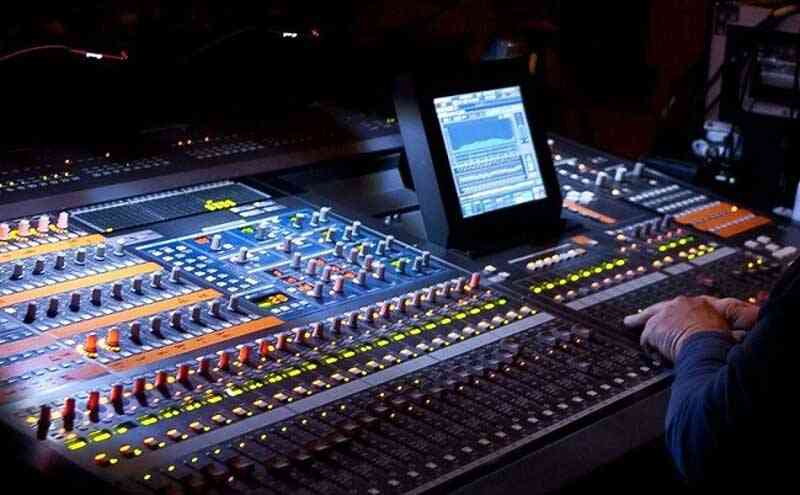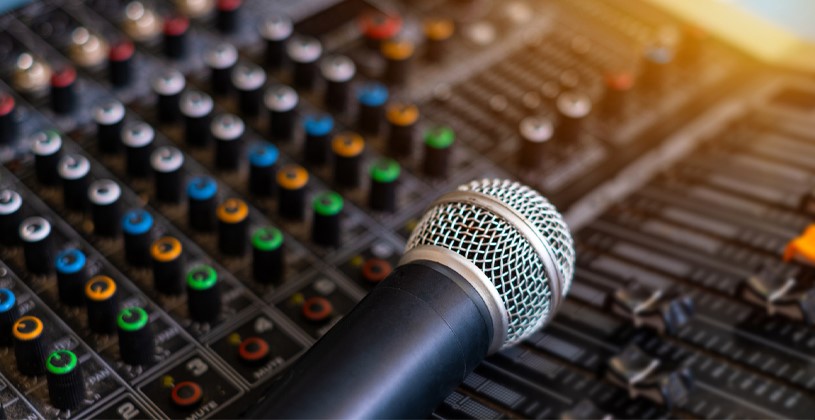Sound mixer
The sound mixer is one of the advanced and professional equipments used to produce podcasts. If you are professionally engaged in producing and creating audio content, you must know audio mixers and learn how to work with them.

What is a sound mixer?
In general, a sound mixer is a device that can receive and combine multiple signals and transmit them to speakers. Receiving and combining these signals received through microphones is the main task of this device. But in addition to these, mixers have other capabilities and facilities.
For example, sound mixers can adjust the sound level. Also, if there is a need to amplify the sound, this is the responsibility of the mixers. Due to these functions and capabilities of the sound mixer, its use for producing and recording ideal and professional podcasts becomes especially important.
The exciting thing is that many people today prefer to make sound mixing work using a tablet or mobile phone. But these mixers can provide the most advanced and best services to their users as powerful tools and equipment in the field of recording and combining sound signals.
Who should use a sound mixer?
As we said, the audio mixer is one of the most professional podcast equipment. So it seems there is no need for people to use it at the beginning of podcast production and launches. But if you will record your podcast and audio content professionally in the studio, using a mixer is also necessary.
People who professionally produce podcasts at home also need a sound mixer. These people usually isolate a space in their home and turn it into a home studio. In this case, they can benefit from analog mixers as their home mixers.
Use of sound mixers
The audio mixer’s most important and main use is to receive and combine audio signals. Generally, these signals are transmitted live to the mixer. This audio tool was initially used only for spaces where the audio program was supposed to be performed live.
As sound and audio content recording technologies became more advanced and updated, mixers have also had a growing trend. Therefore, you should be careful that one of the primary uses of this type of device is in studios and for recording sounds and producing podcasts and audio content.

Review of audio mixer components
Depending on the type of sound mixer, their components can be different from each other. But in general, it can be said that the main components of any mixer include a variety of controls, channels, inputs, and outputs.
Inputs
Every audio mixer has several inputs that connect different audio sources, including microphones, to the mixer. The number of inputs of each mixer is equal to the number of channels. In addition, each entry has several distinguishing it from others.
channels
The channels of any sound mixer are an integral part of it. Audio signals enter these channels, are combined, and the necessary settings are applied and directed to the destination equipment. Be careful that each channel is connected to only one input, and therefore the number of channels and inputs of each mixer is always equal.
Outputs
The outputs of audio mixers are the part through which prepared audio signals are transferred to output sources such as speakers.
Sound mixer controls
The fact is that every sound mixer has several controls. For example, the Gain control is designed in such a way that it can control and adjust the audio frequency level that enters the master. If this frequency is not set correctly, the transmitted signal will be damaged and not received. This point shows the importance of controls.
Another control that exists on sound mixer devices is the EQ control. This control balances the incoming sounds. PAN control is also for controlling and managing stereo sound. On the other hand, there are controls called faders, whose main task is to adjust and control the amount of sound entering the channels. These controls are sliding, and the required settings can be applied by moving them up and down.
The Phantom Power control is among other controls used to adjust the microphone volume. Solo control also lets you cut off other signals while recording a podcast. In this way, only the sound of one channel is played and adjusted.
Types of sound mixers
One of the tips for podcast production is that sound mixer are usually produced in different types. Therefore, if you intend to use them, you should know which type of audio mixer devices in the market suit you. The analog sound mixer is one of the simplest types of mixers available, but due to the simplicity of its operation, its price is also lower than other models.
It is very easy to work with this type of mixer. Of course, you should note that this type of mixer lacks facilities such as an automatic program. Also, it is less possible to make sound changes in it than in other mixers. On the other hand, digital audio mixers have many features and require a lot of experience and expertise to work with them. You can connect these devices to your computer system and even save the work done.
You can also control audio signals remotely using smartphones. Power mixers are among other types of sound mixer devices that are similar to analog systems. The only difference between them has a powerful amplifier. Finally, the sound mixer is software that can be used to mix audio files.
The difference between a sound card and a sound mixer
The most important difference between a sound mixer and a sound card is their function and function. The sound card’s central part prepares audio signals for playback. But sound mixers’ main role and task are to adjust, control, and combine the received sounds.
Among other differences between these two, we can mention the difference in appearance as well as the difference in their use. The audio mixer has more inputs and outputs and can be used in studios and live broadcasts. At the same time, the main use of the sound card is in studios.

13 golden tips before recording a podcast
Recording a podcast is a step that many people face with fear and anxiety. But believe it or not, it’s enough to observe and consider a few basic points beforehand, and then you won’t be overwhelmed by anxiety and fear during recording. It is better to know that the most important thing about your voice is to have a unique style, take advantage of the art of expression and know how to take care of your voice.
In general, there are many tools that you can use to increase and improve sound quality when recording a podcast. But this is only possible if you have a strong financial investment because, in this case, you will have access to professional microphones, expensive sound recording, and editing devices, or even soundproofing.
But it’s good to know that most good professional podcasters don’t need the equipment of a recording studio. Rather, they have only cultivated their voice, and by using the techniques of art expression and taking care of it, they have increased the sound quality during podcast production. You do not need any financial capital for this section. It would help if you spent time and practice learning how to record a podcast.
How to talk on a podcast?
The first thing to consider when recording a podcast is to be natural. It would help if you spoke naturally and there was nothing artificial in your voice. Reading from the text makes your voice sound inauthentic. Our advice is to rest yourself and your voice a day before recording and take care of your voice differently. Also, warm up your voice for at least ten minutes before recording.
The important thing is that instead of reading from the text you have written and prepared, choose a suitable narrative style and practice it. To sound good when recording a podcast, you need a combination of technique, confidence, information, knowledge about the topic, and how to express your feelings.
1. Before you start your podcast, think about your voice and style
Before recording the podcast, it is better to think about the suitable voice and find and choose the appropriate narrative style. Go to other podcasts with a similar topic and pay attention to their narration and voice. Then look for a unique style.
2. Trial and error
After recording the podcast, listen to it again and make any necessary changes. This will make your podcast look professional. It is very important to balance your natural voice and how you pronounce words when starting your podcast. Be sure to listen to your recording and correct it.
3. Share feelings through podcast audio
After you’ve developed your overall style for podcasting, it’s time to learn how to bring your emotions into your performance. This is extremely important to communicate with the audience. But remember not to overdo it, which will make your voice sound unnatural.
4. Record a podcast standing up
Interestingly, good podcasters and successful speakers usually stand while recording their podcasts and programs. There are many reasons for this. First of all, you can control your breathing more easily. Therefore, pronunciation becomes clearer and, of course, easier.
It is not bad to know that in the standing position, the possibility of podcast recording increases due to the increased breathing capacity. In addition, you can express your feelings more easily with your hand and body movements and, of course, have more self-confidence and peace.
5. Breathing exercises
By breathing exercises, you can prevent taking deep breaths while recording a podcast. Doing this gives you more self-confidence and, therefore, more control over things.
6. Review your text
The more familiar you are with the text, the more confident you will be, and of course, the less stuttering you will be when producing a podcast.
7. Slow down your narrative rhythm
The more familiar you are with the content of the podcast, the better you know where you need to speed up the narrative and where you need to slow down your story to create suspense. This is extremely important, especially if you are at the beginning of your speaking career. The less you rush to say the words, the more the audience will enjoy your expression and the story you are telling.
8. Pause to get your audience’s attention
One of the most important points you should pay attention to when recording a podcast is attracting the audience’s attention. This is possible by pausing. If you produce the podcast at a single pace and rhythm, you will probably lose a lot of audience.
9. Avoid using words
Phrases may interest you as the speaker, but they are very unpleasant for the podcast audience. You probably can’t stop them while recording the podcast, but you must edit it later. But we advise practicing as much as possible to eliminate these words.
10. Avoid arching words
As much as possible, avoid inflection when recording a podcast. This will not happen if you are familiar with the subject and have practiced enough.
11. Take care of your voice
When you become a podcaster, your voice becomes one of the most important podcast tools and equipment. So just as you take care of your expensive microphone, you should also take care of your voice. Our advice is not to smoke and drink alcohol. Also, do not shout as much as possible in speeches, parties, etc., so your vocal cords are not worn out. While sleeping enough and drinking water.
12. Warm up your voice before starting the podcast
This will prevent your voice from sounding tired when recording a podcast.
13. Re-recording the podcast
Our advice is to avoid re-recording the podcast as much as possible. But if you need to re-record a part of it, adjust the environment and recording conditions to the original recording conditions as much as possible.
Important points in the podcast recording
Initially, you should be careful and focus on audio points, but never forget the role of tools and equipment. Don’t forget the microphone, podcast production software, editing software, etc.

